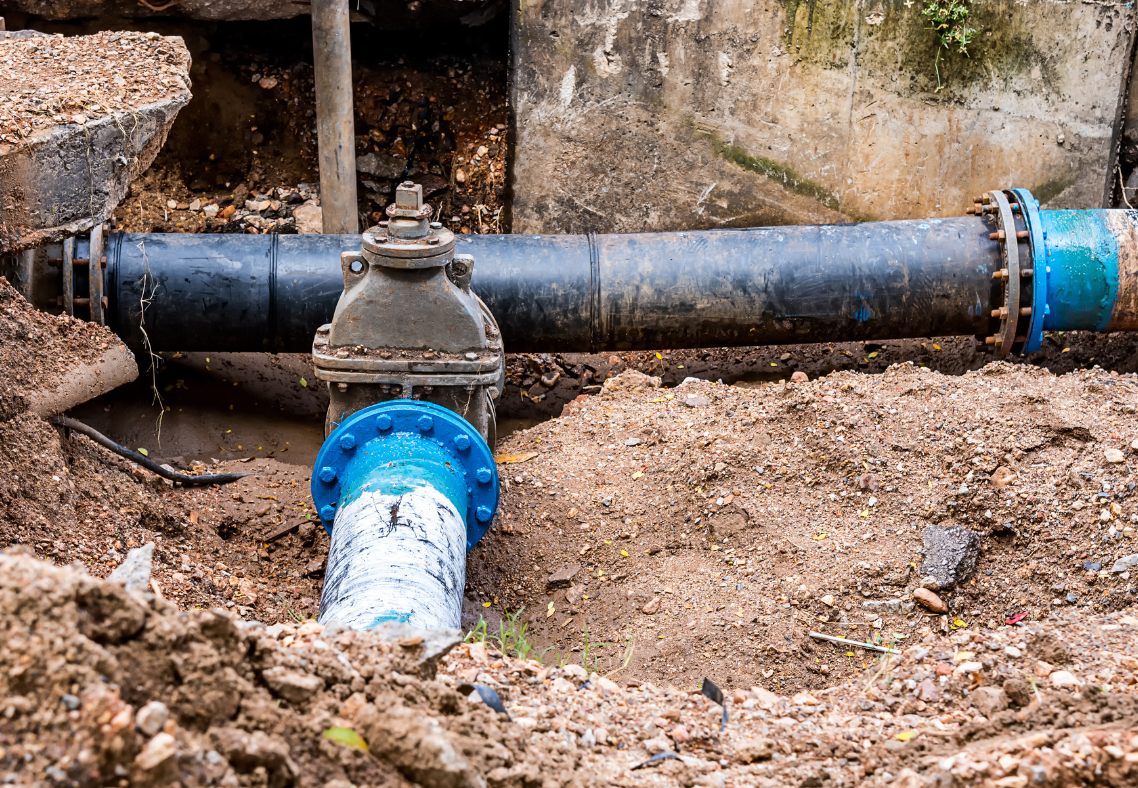If you’ve ever turned on your faucet and heard sputtering sounds or noticed inconsistent water flow, you might have air trapped in your water lines. Air in water lines is a common plumbing issue that can disrupt the performance of your plumbing system, leading to noisy pipes, irregular water pressure, or even damage to your water supply lines if left unaddressed. For residents in Harford County, MD, this issue can be particularly annoying, especially during routine activities like washing dishes or taking a shower. In this comprehensive guide, we will walk you through the causes of air in your water lines, how to fix the issue, and when it’s time to call in a professional plumber. By the end of this article, you’ll have a solid understanding of how to troubleshoot air in your water lines and prevent it from becoming a recurring problem in your home.

Answering The Question: How To Fix Air In Water Line?
What Causes Air in Water Lines?
Before diving into how to fix the problem, it’s important to understand how air can get trapped in your water lines in the first place. Common causes of air in water lines include:
1. Water Line Repairs or Maintenance
One of the most common reasons air enters your plumbing system is through recent work on your water lines. If your water supply has been turned off, such as during routine maintenance or after repairs to your water main, air can easily become trapped in the pipes when the water is turned back on.
2. Well System Problems
For homeowners in Harford County who rely on well water, air can enter the lines if there’s a problem with the well system. Issues with the well pump or the water tank could cause air to mix with the water, leading to sputtering faucets and inconsistent water flow.
3. Leaking Pipes
A leak in your water supply line can draw air into the system. This is often the case when the water pressure drops due to a leak, allowing air to enter the pipes along with the water.
4. High Water Demand
Sometimes, air can be introduced into your plumbing system when the water demand is high, especially if there’s a fluctuation in your home’s water pressure. This can be more common in neighborhoods where multiple homes are drawing from the same municipal water supply at peak times.
Signs You Have Air in Your Water Lines
The most obvious sign of air in your water lines is sputtering faucets. When you turn on a faucet and the water comes out with bursts of air, followed by spurts of water, you likely have air trapped in your lines. Other signs include:
- Inconsistent water pressure: Water may flow unevenly, especially when using hot and cold water together.
- Noisy pipes: You might hear banging or vibrating noises when water is flowing, which can occur due to air pockets causing pressure imbalances.
- Cloudy or foamy water: Air bubbles in the water can cause it to appear cloudy or foamy when coming out of faucets or showerheads.
If you notice these signs in your home, don’t panic. In most cases, fixing the issue is straightforward and can be done without major repairs.
How to Fix Air in Water Lines
Now that you understand the causes and signs of air in your water lines, let’s go over the steps to fix the problem. Keep in mind that if you’re uncomfortable working on your plumbing or the issue persists, it’s always a good idea to contact a professional plumber for assistance.
1. Turn Off the Water Supply
Before you begin fixing air in your water lines, you’ll need to shut off the main water supply to your home. You can usually find the main water shut-off valve near your water meter or where the main water line enters your home. Turn the valve to the “off” position to stop the flow of water while you work on the system.
2. Open All Faucets
Once the water supply is turned off, go through your house and open all faucets, including sinks, bathtubs, showers, and even outdoor spigots. Be sure to open both the hot and cold water valves. This step helps to release any remaining water from the lines, along with the trapped air.
3. Flush the System
With all your faucets open, turn the main water supply back on. As the water starts to flow, it will push the air out of the pipes. You’ll likely hear some sputtering and see spurts of water mixed with air as the water flow returns to normal.
- Start at the Lowest Point: Begin by closing the faucets at the lowest point in your home, such as a basement sink or an outdoor spigot. Gradually work your way up, closing each faucet as water runs smoothly. This ensures that the air is fully flushed out of your system.
- Flush Toilets: Don’t forget to flush all the toilets in your home during this process, as air can also be trapped in the toilet’s water supply line.
4. Check for Leaks
Once the air has been flushed out and the water is flowing consistently, check your water lines for any signs of leaks. Leaking pipes can be a cause of air in your water lines, so it’s important to address any leaks promptly to prevent the issue from recurring.
- Look for Water Drips: Inspect visible pipes under sinks, in the basement, and behind appliances for any drips or dampness. If you find a leak, it’s best to contact a professional plumber to repair or replace the damaged section of the pipe.
5. Inspect Well Systems (If Applicable)
For homeowners in Harford County who use well water, check your well system for any issues with the pump or pressure tank. Air in the water lines could indicate a malfunction with these components, and addressing the root cause will help prevent further air from entering your plumbing system.
6. Prevent Future Issues
To help prevent air from entering your water lines in the future, consider the following steps:
- Routine Maintenance: Have your water lines and well system inspected regularly by a professional plumber. Regular maintenance can catch small problems before they lead to bigger issues.
- Monitor Water Pressure: Keep an eye on your home’s water pressure. Fluctuating water pressure can cause air to enter the lines, so installing a pressure regulator may help maintain consistent pressure and prevent air pockets from forming.
When to Call a Professional
If you’ve tried flushing the air out of your water lines but the problem persists, it’s time to call in a professional plumber. Persistent air in your water lines could indicate a deeper issue, such as a hidden leak, a problem with your well system, or an issue with the municipal water supply. A licensed plumber will have the tools and expertise to diagnose and repair the problem efficiently. In Harford County, MD, where aging infrastructure and fluctuating water demand can create plumbing issues, it’s always a good idea to consult with a local expert like Five Star Plumbing to ensure your water lines are functioning properly.
Contact Five Star Plumbing Today for Water Line Repair Services in Harford County, MD
Don’t let air in your water lines cause frustration and disrupt your daily routine. If you’re experiencing sputtering faucets, inconsistent water pressure, or noisy pipes, Five Star Plumbing is here to help. We offer expert water line repair services to homeowners in Harford County, MD, including Bel Air, Havre de Grace, Aberdeen, and surrounding areas. Our experienced team of plumbers can quickly diagnose the issue and restore your water lines to proper working order. Whether it’s a small repair or a larger plumbing project, we are committed to providing fast, reliable, and affordable service. Contact Five Star Plumbing today to schedule a water line inspection or repair and enjoy smooth, uninterrupted water flow in your home!
